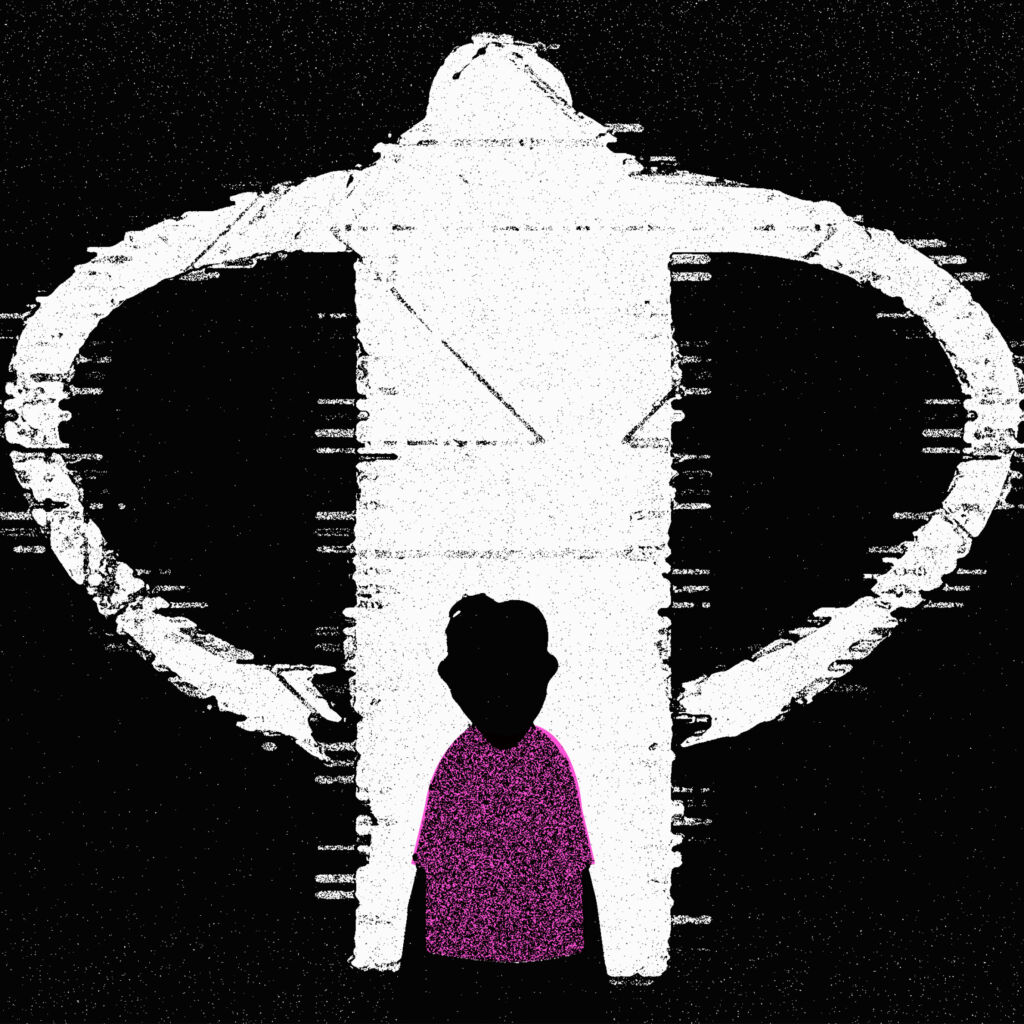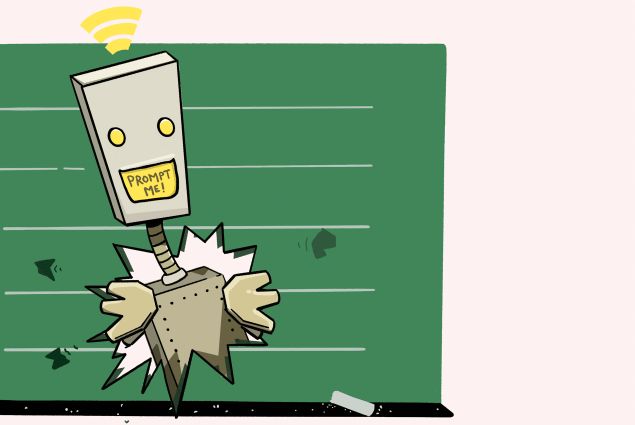Throughout February and March, organizations across Canada participated in Pink Shirt Day, a nationwide “anti-bullying” movement. Pink t-shirts emblazoned with slogans like “Be a buddy, not a bully” and “Kindness is one size fits all” were sported by all age groups. Young people took part in Pink Day events in schools and community spaces, and learned that the history of Pink Day can be traced to a high school protest in Nova Scotia in 2007. The version of the Pink Day origin story that circulates in my own Canadian prairie context goes something like this: When a new grade 9 student, Jadrien Cota, was bullied for wearing a pink t-shirt, David Shepherd and Travis Price purchased 50 pink tank tops to distribute to their fellow students, in solidarity with their classmate and to protest against bullying. This is a heartwarming story. But it is also inaccurate. Jadrien was not bullied for wearing a pink shirt. Classmates taunted and threatened him with physical violence because they believed he was gay. The erasure of the homophobia at the heart of the incident is an example of how systemic oppression and violence in our schools is often swept under the umbrella term of “bullying.” Socially constructed categories of race, gender, class, sexuality, and ability continue to shape people’s lives, and this is starkly illustrated by the repetitive patterns of who is “bullied” at school.
There is a well-documented relationship between intolerance for non-dominant identities (think racialized, Indigenous, disabled, trans, gay, lesbian, female, Muslim, and physical appearances outside of oppressive standards) and school bullying and violence (Davis, 2018; Jiwani, 2005; Lachance, 2019; Robinson, 2012; Sykes, 2011; Walton, 2011). Of course, there are exceptions: individuals from all backgrounds can confront exclusionary and unwelcoming school and work environments. However, young people who transgress rigid social norms and expectations are those most often penalized by a multitude of consequences, ranging from micro-aggressions to physical violence. Through an anti-oppressive lens, school bullying and violence are the outcomes of social contexts that valorize straight, white, able-bodied and middle-class ways of
being, and devalue and other non-dominant groups. Adults often tell young people to “be themselves” without acknowledging that for non-dominant-group students, being “themselves” often has real social penalties. While a “just be yourself” approach is often well-intentioned, it risks locating the problem within those being targeted and victimized instead of the perpetrators. An anti-oppressive approach to school bullying requires us to not only hold the perpetrators accountable; it requires everyone in the school community to examine how taken for granted ways of doing and thinking privilege certain identities and marginalize others (Kumashiro, 2000).
"Adults often tell young people to “be themselves” without acknowledging that for non-dominant-group students, being “themselves” often has real social penalties. While a “just be yourself” approach is often well-intentioned, it risks locating the problem within those being targeted and victimized instead of the perpetrators."
The importance of anti-oppressive education for combatting bullying and violence in schools, and more precisely, anti-racist education, was foregrounded earlier this year by the events surrounding Kaleab Schmidt, a 13-year-old Black student from a small town in Saskatchewan. The story is a more recent example of how the systemic violence of racism—an issue in schools across the Canadian Prairies that school leaders often deny or do not acknowledge—can easily be transformed into a story about “bullying”. Kaleab Schmidt took his own life the day after he was suspended from school for punching a student who had called him a racial slur. A public inquest into his death revealed that for several years, students in the small community directed multiple forms of racism at Kaleab for which they faced few consequences.
In the delivery of their recommendations, the inquest jury stated, “a poster in the hallway is not effective”, alluding to the superficiality of common bullying “interventions”. While the gravity of what happened to Kaleab was not lost on the jury, they did not include anti-racist education in their recommendations. Instead, the jury asked that all instances of physical altercations, bullying and racism be investigated and documented, and further recommended an update and enforcement of anti-bullying policy with education for teachers, administration and students.
How this update of the policy and the recommended anti-bullying education will directly address racism is yet to be known, but it is crucial the issues of racism and white dominance in the community remain at the centre. The actions of Kaleab’s classmates, and the adults who did not hold them accountable, were not simply “unkind.” Nor were they exceptional. Their (in)actions emerged from a wider socio-historical context that has long upheld whiteness and marginalized Indigenous and racialized people on the Canadian prairies. The need to keep the focus on anti-racism was underlined in a media interview given by one of Kaleab’s classmates. When asked what she has learned at school about racism, she stated, “Nothing. It’s swept under the rug.”
In underlining the erasure of systemic oppression, the student’s words allude to the discomfort around talking to young people about racism and other forms of oppression. Many adults often feel unprepared to teach against oppression or even talk about it—and when it shows up in school hallways, the default response is a lecture on the golden rule or an admonishment about respect.
It is a myth that naming and talking about oppression and power will exacerbate “the problem”, and pretending it doesn’t exist is unfair to everyone. Young people learn from a young age that straight and white are “right”, that performing their assigned genders is safest, and disability is associated with deficit. The positive side is that young people are deeply motivated to question this harmful knowledge and work for social change. To do so, they require adults to support them in addressing the challenges of race, class, gender, sexuality and ableism they encounter on a daily basis.
Teachers and school administrators have the responsibility to design meaningful interventions based on their own contextual challenges. But they cannot shoulder the work of reframing bullying as forms of systemic injustice and do the work of anti-oppression education alone. Parents, guardians, family members, youth workers, counsellors, coaches, social workers, and medical professionals all play a pedagogical role in the lives of young people. Racism, homophobia and misogyny do play out at school where young people spend a large amount of time, but they are also taught at the dinner table, on sports teams, in daycares, churches, community organizations, in social services, and in the media.
There is nothing wrong with promoting kindness and positivity, but this alone is not a solution for ending oppression and systemic violence. We need to start naming and addressing the more uncomfortable aspects of school bullying and violence, and acknowledge their inseparability from larger social forces. Anyone can be kind and niceties are not social justice. Let’s reserve our accolades for those who are having courageous conversations about social differences disrupting the myth that everyone is treated equally and working to end injustice and oppression, inside and outside of school walls. And when Pink Day comes around again, remember Travis Price and David Shepherd not for being nice, but for taking a stand for social justice.
This article originally appeared in the summer/fall 2020 issue of Our Schools / Our Selves.
References
Davis, L.J. (2018). Go to the margins of the class: Disability and hate crimes. In Adams, A., Blumenfield, W.J., Catalano, D.C.J., Dejong, K.S., Hackman,
H.W., Hopkins, L.E., Love, B.J., Peters, M.L., Shlasko, D., & Zúñiga, X. (Eds.) Readings for diversity and social justice (4th ed., pp. 493–497). Routledge.
Jiwani, Y. (2005). Walking a Tightrope: The Many Faces of Violence in the Lives of Racialized Immigrant Girls and Young Women. Violence Against Women, 11(7), 846–875. https://doi.org/10.1177/107780...
Kumashiro, K. (2000). Toward a theory of anti-oppressive education. Review of Educational Research, 70(1), 25–53.
Lachance, L. (2019). LGBTQ2+ youth priorities for addressing gender-based violence. Public Health Agency of Canada. https://www.wisdom2action.org/...
2019/06/GBV-Final-Report.pdf
Robinson, K.H. (2012). Sexual harassment in schools: Issues of identity
and power: Negotiating the complexities, contexts and contradictions of
this everyday practice. In S. Saltmarsh, K.H. Robinson & C. Davies (Eds.), Rethinking School Violence: Theory, Gender, Context (pp. 71–93). Palgrave Macmillan.
Sykes, H. (2011). Queer bodies: Sexualities, genders, & fatness in physical education. Peter Lang.
Walton, G. (2011). Spinning our wheels: Reconceptualizing bullying beyond behaviour-focused approaches. Discourse: Studies in the Cultural Politics of Education, 32(1), 131–144. doi:10.1080/01596306.2011.537079







